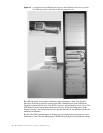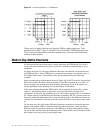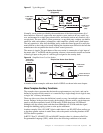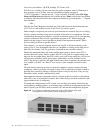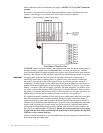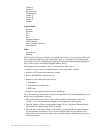
58 Handbook of Intercom Systems Engineering
You are in your kitchen – QUICK, multiply 347.2 times 15.8 –
Well let’s see, I could go down to the den, turn on the computer, wait for Windows
®
to
boot up (have a cup of coffee), start my spreadsheet program, and type in
“=347.2*15.8<enter>,” read the answer – “oops, no pencil -%(&#@) Select File, Page
Setup, Set Print Area highlight the cell with the answer, Print, wait for the Laser Printer
to warm up, take the print out, tell the computer to shut down, go back upstairs….” elapsed
time 9 minutes.
— OR —
Take the free Time Magazine calculator out of the junk drawer in the kitchen and press
347.2 X 15.8 = and read the answer (5,485.76 for you curious types).
Same example, except now you are not in your home but in a research lab you are visiting,
and see a pocket calculator lying next to a turned off monitor for a workstation. Now the
considerations become more complex – does the workstation work at all? Is it an operating
system I understand? Does it have a spreadsheet program at all? Would turning the
monitor on and trying to start a spreadsheet disrupt some important research? Which
device would you choose to get the answer?
Last example – you are not computer literate, the only PC in the house belongs to the
expert (your 12 year old daughter and she is at a neighbor’s working on the web site for
their dot.com startup). “Oh, for gosh sakes, just hand me the calculator already!”
Despite the attempted humor, the same considerations apply to matrix versus TW or
wireless intercom systems. Matrix systems (like PCs) are good for complex things, and
they can also do simple things, but if PCs really were good for the small jobs, why do you
still have that calculator, pencil, pad of paper, photocopier, and fax machine in your
office? The answer is because, like with an intercom system, sometimes all you need to do
is to scribble “call Paul” on a Post-it
®
note to put on your computer monitor for after
lunch.
TW and wireless intercom systems are generally simple to operate, transport, hookup
(configure), and do not require an expert to setup. This is especially true if the system in
question does not need to change on an hour-to-hour or day-to-day basis. They are very
affordable, robust, reliable, and physically small.
Interconnection between components may be a simple as thin air (wireless), microphone
cable (PL), coax or twisted pair for matrix, but is more likely to be multi-conductor cable.
Again, another layer of complexity.
To change the configuration of a PL system, you can likely just change which units are
tied together by changing cables, or by turning some switches on an assignment panel. In a
matrix system, you will likely need to connect a PC and run the configuration program.
Figure 4.9
Use of Source Assignment Panels such as this SAP-1626 allow the rapid
reconfiguration of PL systems without changing any cables



